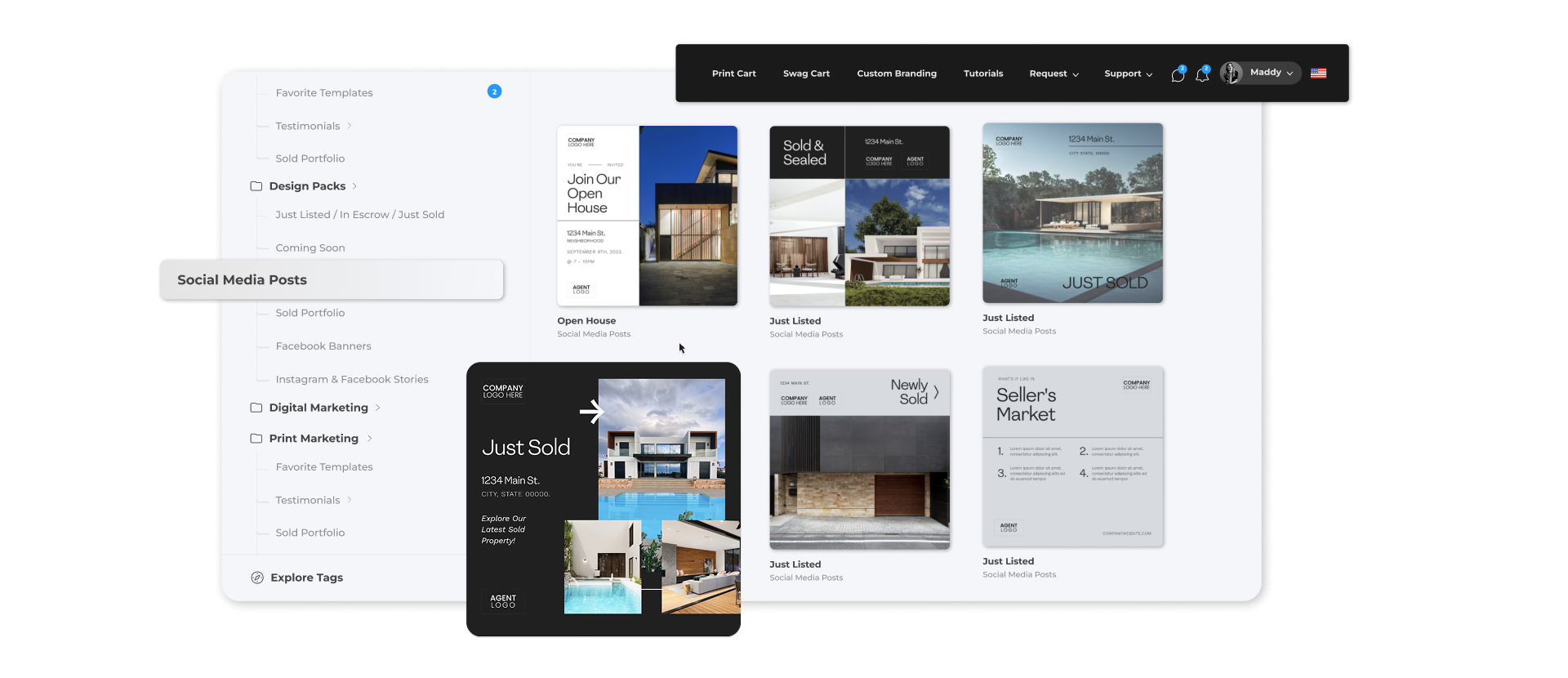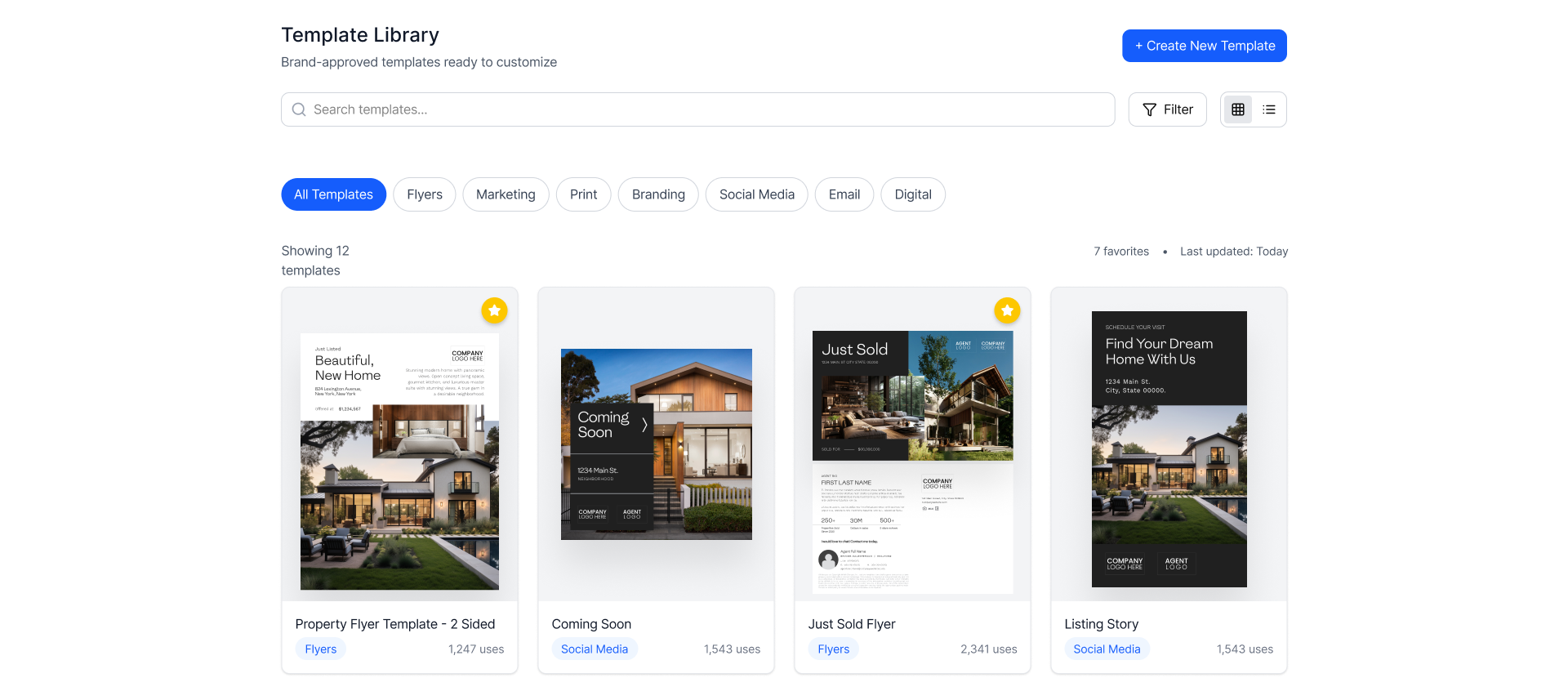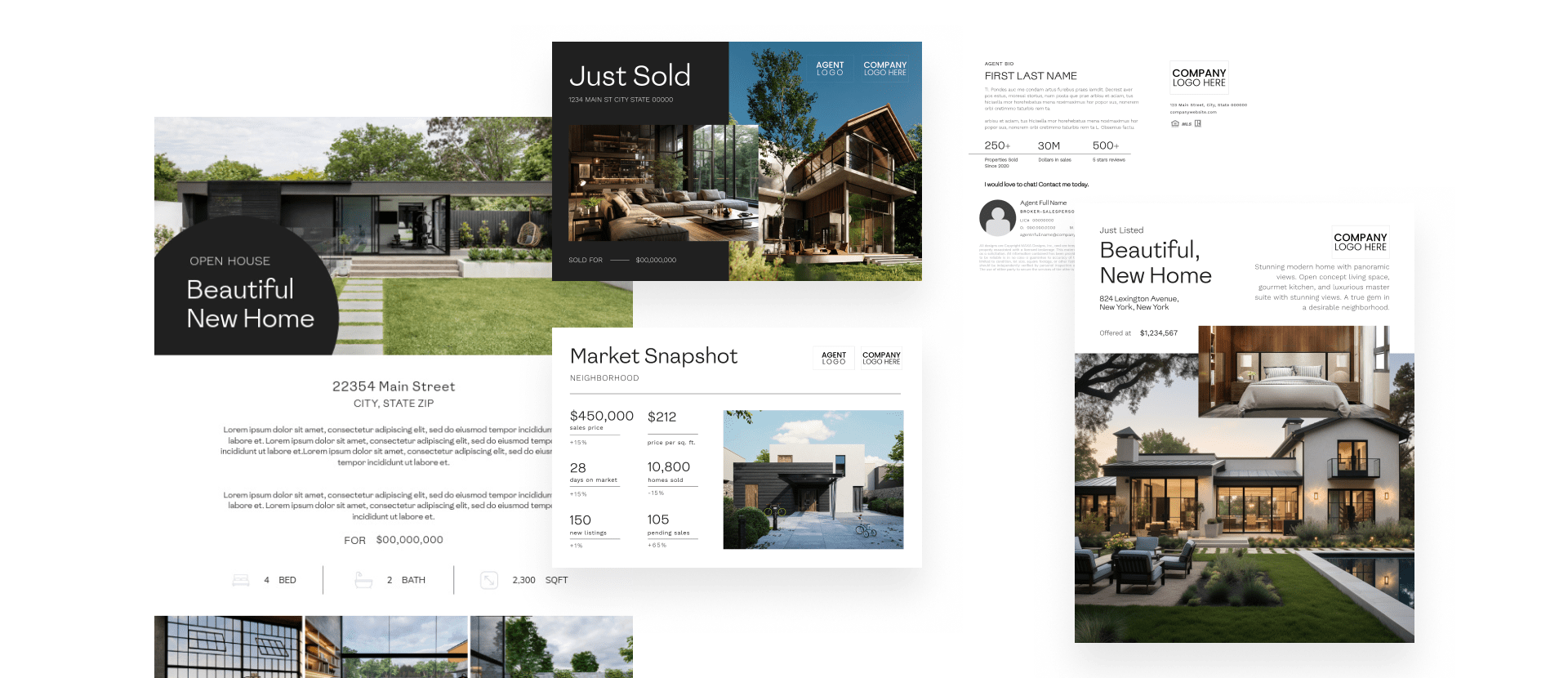Luxury real estate isn’t just about having a lavish home. It’s about building a lifestyle. A lifestyle that embodies exclusivity and excellence. That’s where real estate branding comes into the picture. Let’s now paint it. The market is packed with multiple agents offering similar listings. Then, what will make high-net-worth clients choose you over the next agent with the same nice suit and a portfolio of penthouses – branding. With a clear and polished brand that invokes trust and builds recognition, you’ll attract the right clientele, command higher commissions, and, ultimately, stand out from the crowd.
In this post, we’ll discuss all the elements that make a real estate brand luxurious, from selecting the right visual elements to employing effective marketing strategies, empowering you to run with the big dogs.
What Makes a Real Estate Brand “Luxury”?
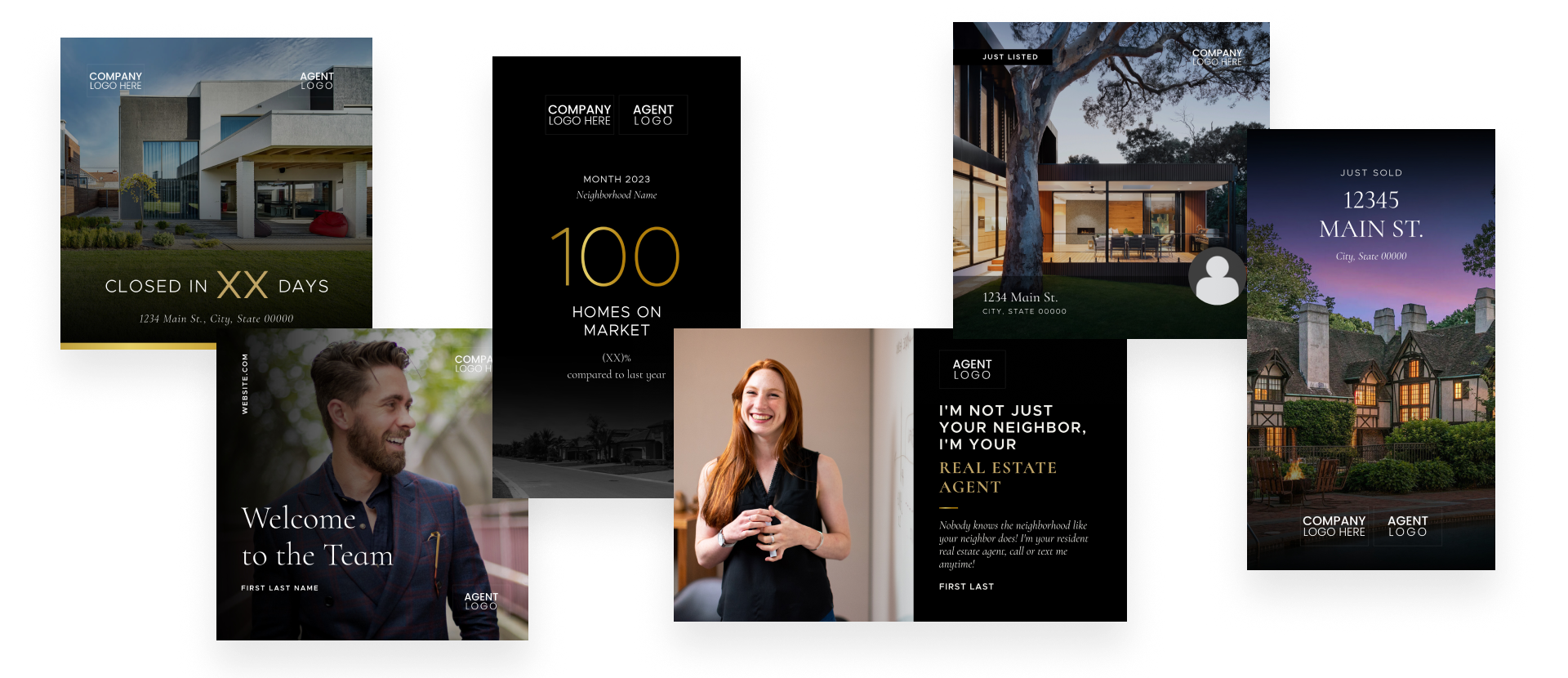
A real estate brand is considered a luxury one if it delivers exclusivity, a personalized approach, value, and a strong visual identity. One aspect won’t cut it. Either you offer the whole package, or you’ll never be able to compete with the likes of Sotheby's International Realty and Christie's International Real Estate. Sure, they have sleek logos and polished websites. However, without that personal touch of their agents, it would be all for nothing.
The defining traits of a luxury real estate brand are what we call the four Es:
- Elegance: The language in the listing, paired with the right topography and the artistic photos that capture the essence of the place, helps a brand exude elegance, and elegance is one of the building blocks of luxury.
- Exclusivity: Luxury brands serve a specific, high-end clientele. They don’t try to appeal to everyone, and that’s what makes them desirable. Scarcity and selectivity are part of the appeal.
- Expertise: Although luxury real estate brands offer a wide range of properties, those that specialize in, say, ski and mountain homes or beachfront real estate provide a more personalized experience.
- Excellence: There's no room for average. Whether it's property staging, digital marketing, or client communication, luxury brands operate at a higher standard across the board.
This approach differs significantly from traditional real estate branding in that luxury real estate branding focuses less on mass appeal and features, and more on exclusivity, emotional resonance, and lifestyle-driven messaging that resonates with a high-end clientele.
This kind of clientele, with means and the know-how, has a distinct mindset. Their decisions are a mix of logical and emotionally driven decisions. They cherish scarcity and anything associated with prestige, whether it's a property in a gated community or having celebrities as neighbors. Real estate agents and brokerages that appeal to their aspirations and sophistication through their branding endeavors and offer properties that align with their identity are the ones who will close more deals.
Here’s how you can do precisely that.
Step 1: Define Your Brand Identity
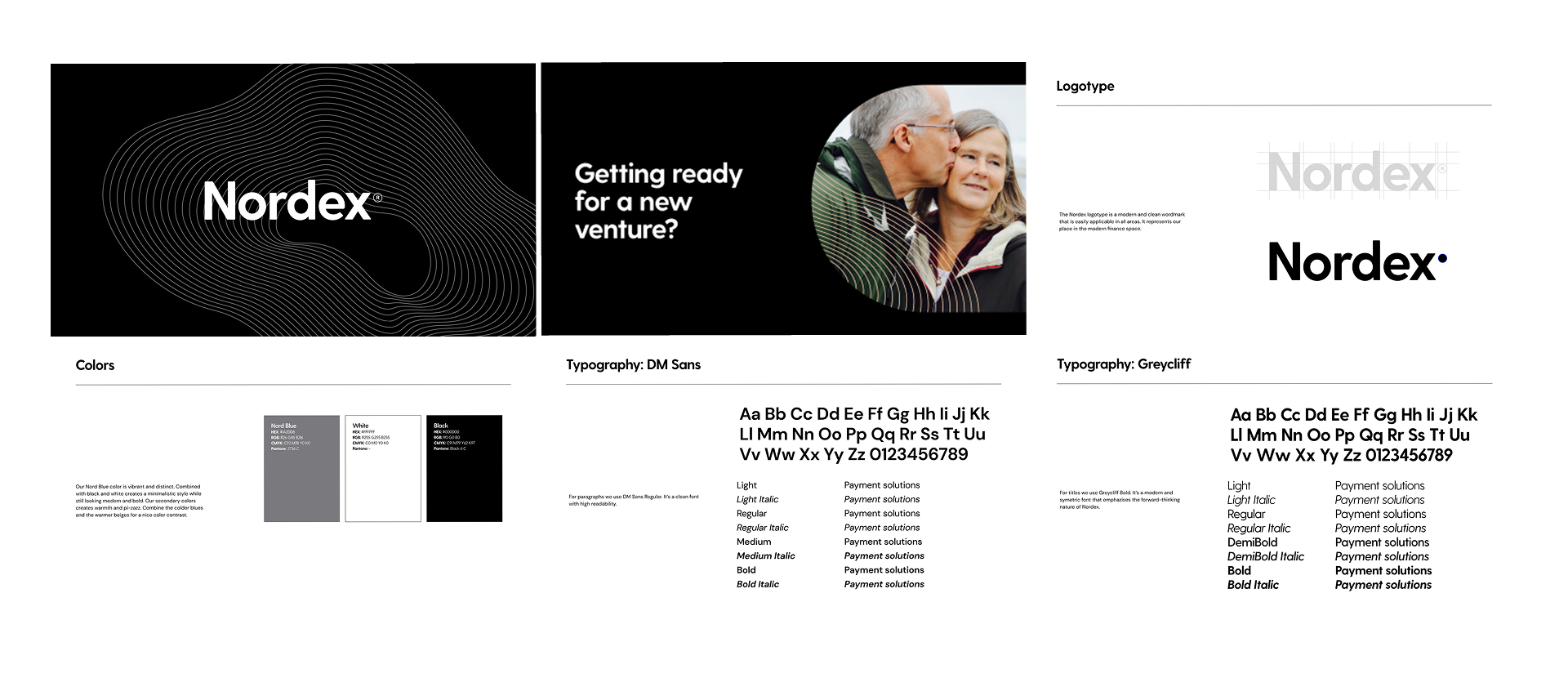
Designing logos and picking fonts for your website comes second. First is realising who you are as a brand. Identity plays a key role in luxury real estate, as it shapes how people perceive you and influences their memory and trust in you, particularly when it comes to multi-million-dollar purchases.
Here are the key elements to focus on when defining your brand identity:
- Core Values: Discretion, integrity, and attention to detail are usually the pillars upon which luxury real estate brands stand. These should guide every client interaction and decision you make.
- Mission and Vision: Consider what motivates you. Is it helping people find their dream home, or offering a white label solution for luxury buyers? Your mission and vision should be like a footprint on your website or any other marketing channel.
- Tone of Voice: Is your brand polished and understated, or bold and modern? The tone should match the expectations and preferences of luxury buyers.
- Ideal Client Persona: Define exactly who you’re speaking to. Are they successful entrepreneurs relocating to a global city? Wealthy retirees seeking privacy and prestige? Your branding should reflect their lifestyle, goals, and pain points.
Remember one of the most important caveats of real estate marketing — luxury buyers are buying into the lifestyle, not just the property. So, to align your brand with the lifestyle they are after, you must leverage subtle messaging that will whisper in their ear — you’ve earned it. Take Tomer Fridman, for example. He is the go-to real estate agent for celebrities, especially the Kardashians, which has even earned him an appearance on their Hulu show. He has identified his ideal client persona, which has resulted in $840 million in sales for him in 2022.
Step 2: Invest in a Premium Visual Identity

Premium looks and real estate go hand in hand. Your visual identity is the first impression you make on the clients, and it needs to feel elevated. The first item on that agenda is the logo. See it as your signature. It can convey to clients that you mean business and understand what luxury is. Next up are the colors.
Rich tones, such as taupe or navy blue, evoke a sense of sophistication and instill trust in your high-end customers. Take the Sotheby's International Realty website, as an example. With that deep blue that dominates the pages and short videos of their exclusive listings in a carousel right there on the homepage, you instantly realize this company is all about prime real estate.
It’s also vital to maintain consistency in design. When your website, business cards, signage, and social media all adhere to the same design rules, you appear polished and reliable, but keeping everything under wraps at all times is challenging. This is where MAXA Designs' real estate platform and the like prove to be most useful.
Their designs can help you create print, social, and email marketing templates that perfectly match your brand and ensure consistency across all digital materials. All of your associates can then access the approved branded marketing templates and customize them while maintaining compliance with the brand restrictions. You can even require templates and materials to be approved before being used, which prevents agents from going rogue and your brand from being poorly represented.
Step 3: Create a High-End Website Experience

As far as real estate branding goes, few media are more impactful than a website. For a luxury real estate business, it’s a proper showroom. So, if your website is clunky, loads slowly, or is hard to navigate, you can kiss those wealthy clients goodbye.
Despite what you might think, these clients browse real estate websites and expect the same prime user experience when browsing and when buying a property. A fast-loading and responsive site, featuring high-resolution property photos and lifestyle visuals, helps buyers picture themselves living the dream.
Also, space and simplicity are signs of sophistication. You should avoid clutter and let the content convey the message. Videos are a powerful weapon in your arsenal. They bring listings to life and let them see the value of the property.
There aren’t plenty of these top-notch real estate and brokerage sites around. The Oppenheim Group’s site, with its interactive map showing listings and options, such as the one that displays commercial properties in addition to private ones, is one of them. Taking a leaf out of their book can help you make your listings real page-turners.
Step 4: Leverage Strategic Content & Thought Leadership

If luxury buyers see you as just another agent who’s looking for that commission, you have put yourself at a disadvantage. However, take the time to build your reputation online and publish high-quality content, such as market reports, interior design trends, investment tips, and in-depth neighborhood analyses. You can demonstrate depth and credibility
One way to achieve this is by using SEO-driven blog posts to attract affluent clients organically, while maintaining a refined, informed, and elevated tone. Writing about the state of the market in Los Angeles, focusing on the popular neighborhoods, interest rates, and other related themes, can push your website to the top of the search engine result pages.
Be mindful of your tone. Nothing too salesy in tone that can easily be perceived as clickbait and generic, and you are in the clear.
Step 5: Use Social Media to Enhance Prestige
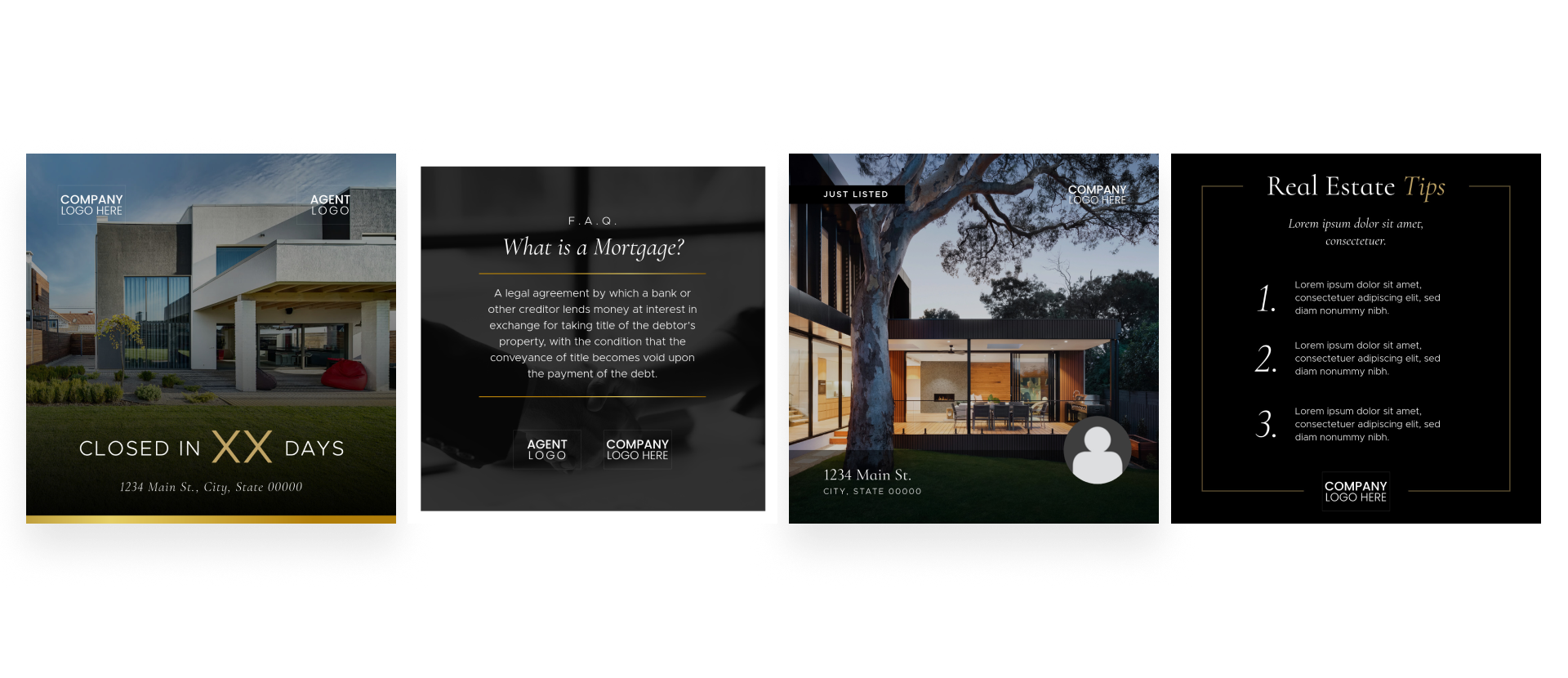
Every post on social media platforms should reflect your brand’s exclusivity and elegance, but it’s hardly a one-size-fits-all solution. Here are some platform-specific tips:
- Instagram Tips: Compile high-quality images, property teasers, and lifestyle content to present in your posts that you can easily set under the highlights sections. You can use Stories for behind-the-scenes tours or opt for a live Q&A session for your followers.
- LinkedIn Tips: This platform is the best option for sharing market insights. You can now integrate through MAXA’s automated real estate market stats and demonstrate thought leadership to establish authority among high-net-worth professionals and industry peers.
Ensure consistency in the color palette and visual style across the platform, incorporating the correct typography and elegant branding. Additionally, partnering with high-end interior designers, architects, or luxury lifestyle influencers can help tap into aligned audiences. One way to achieve this is through co-branded content or joint Instagram Lives, which can lead to a greater reach.
Step 6: Build a Reputation Through Client Experience

Exceptional service is essential when dealing with high-end clients. In fact, it is the thing that brings about word-of-mouth promotion, which still moves the needle in the world of the rich and famous. You are unlikely to receive a video testimonial from A-list actors discussing how helpful you were in helping them achieve their dream house. Endorsement is difficult to get, but to even stand a chance, you need to tick all the right boxes.
Anticipate your clients’ needs before they voice them. Obsess over the little details. Personalized gifts and concierge-level help are the name of the game.
Conclusion
Luxury real estate branding is a long-term investment, and to capitalize on it, you need to build it on the foundations of consistency and strategy. That strategy involves defining your brand’s identity, investing in premium visuals, creating a high-end website, and delivering an unforgettable client experience. It’s crucial to stay consistent with your content, but evolve to remain relevant without losing your brand’s prestige.
Ready to elevate your brokerage? MAXA makes it easy to maintain luxury branding across all platforms with elegant, on-brand marketing templates. Contact us now to learn more about our design services and platform that can elevate your real estate brand to new heights.


